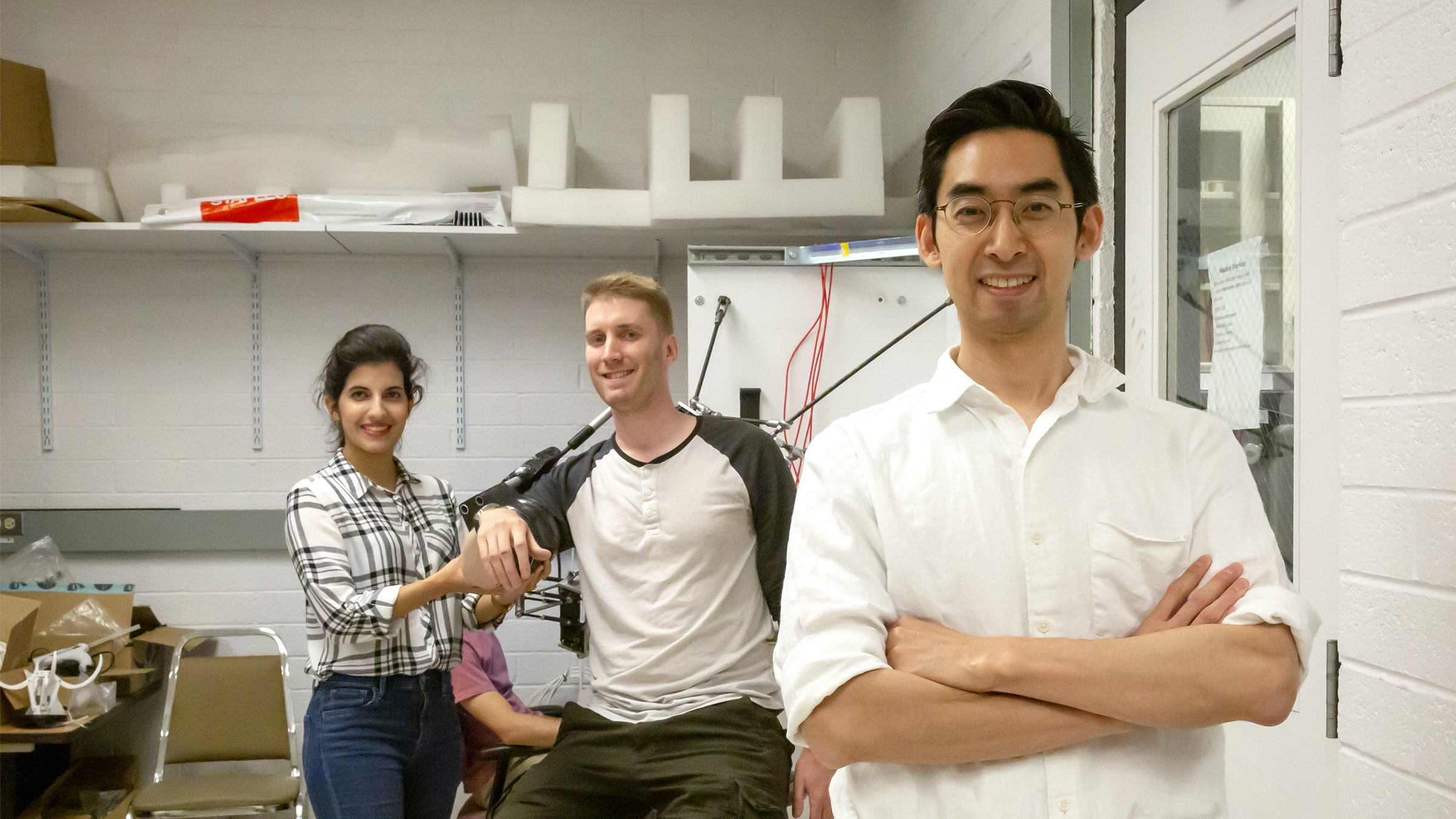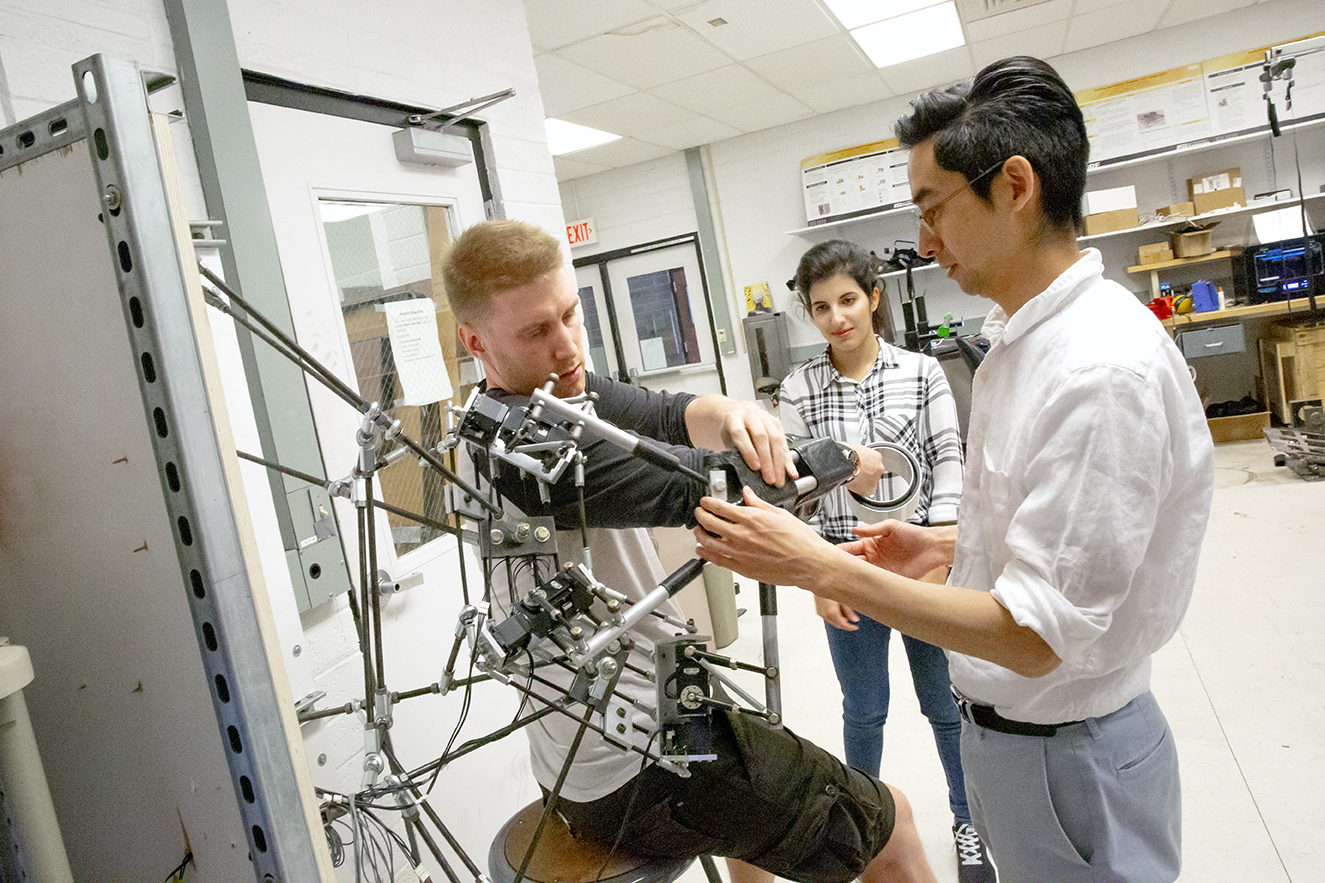
Training stroke survivors with rehabilitation robotics

Above: Assistant Professor Hyunglae Lee is one of 10 Ira A. Fulton Schools of Engineering faculty members to receive an National Science Foundation CAREER Award for 2018 to 2019. He is developing an innovative framework called Transparent Robotic-Aided Rehabilitation and utilizing it in exercise therapy to significantly improve the effectiveness of robot-aided rehabilitation for stroke survivors.
Ten faculty members in the Ira A. Fulton Schools of Engineering have received NSF CAREER Awards between September 2018 and April 2019.
Stroke is one of the leading causes of long-term disabilities in the United States, affecting about 6.5 million Americans. With a decrease in stroke mortality and an increasingly aging population, the number of people requiring rehabilitation following stroke is projected to increase, creating a significant societal need to improve the effectiveness of stroke rehabilitation services.
Hyunglae Lee, an assistant professor of aerospace and mechanical engineering in Arizona State University’s Ira A. Fulton Schools of Engineering, is developing an innovative framework, called Transparent Robotic-Aided Rehabilitation, or TRAIN for short, and utilizing it in exercise therapy to significantly improve the effectiveness of robot-aided rehabilitation. The work is supported by a $547,305, five-year National Science Foundation Faculty Early Career Development Program (CAREER) Award.
Robot-aided rehabilitation has been increasingly utilized to support clinicians in providing high-intensity and repetitive exercise therapy for stroke survivors, and many studies have demonstrated its effectiveness over conventional therapy.
“However, effectiveness of robot-aided rehabilitation is diminished or still controversial when little is known about the neuromuscular mechanisms underlying the motor dysfunction, or when robotic devices used for exercise therapy significantly alter natural joint/limb dynamic behaviors,” says Lee. “These challenges call for a transformative view of robot aided-rehabilitation.”
Lee’s TRAIN framework builds upon enhanced transparency in two distinct aspects. The first is understanding altered biomechanics following a stroke, and the second is physical human-robot interaction.
“Application of this dual transparency concept is highly limited in current best practices in robot-aided rehabilitation,” explains Lee. “Understanding altered biomechanics following stroke still largely depends on simple subjective clinical assessments. In addition, most robotic devices are heavy and have high inertia and resistance that negatively impact the transparency in physical human-robot interaction.”
Successful application of the proposed TRAIN framework to robotic exercise therapy will directly benefit the overall sensorimotor function in stroke survivors including improved range of motion, strength and stability.
“Improved sensorimotor function through the proposed robot-aided rehabilitation will also lead to secondary benefits of improving quality of life in stroke survivors, such as reduced fatigue during motor tasks, improved independence in daily activities and reduced health care cost,” says Lee.
As part of the project, Lee will incorporate education and outreach programs to spark and sustain STEM interest in students and help train the next generation of scientists and engineers in robotics and human movement science.
One example is the Outreach on Demand program to promote easy access to outreach opportunities for underrepresented students, particularly among Hispanic students in grades 6–12.
Lee feels that ASU and the Fulton Schools’ focus on being interdisciplinary helped to play a key role in his proposal being selected.
“My research in robot-aided rehabilitation is multi- and interdisciplinary in nature, requiring integrated knowledge in robotics, controls, biomechanics and human neuromotor control,” says Lee. “At ASU, there are many specialists in each of these research fields, and invaluable feedback from many faculty mentors and colleagues helped me refine my research goals and strengthen specific approaches toward these goals.”




































